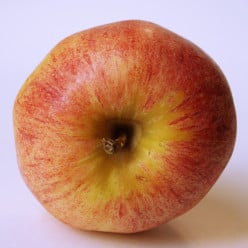What is the Difference Between a Scale and a Mode?
The answer to this question has evaded many a student (and teachers) of music.
What's your answer?
-6SVHmm. I think part of the elusiveness of the question is that even the usage of the terms "scale" and "mode" isn't always consistent. (I've been mulling a Hub on this for quite a while now, but it's still in a pre-writing phase.) However. . .
A "scale" to me specifically implies an ordered collection; you start at the bottom (usually) and ascend scale step by scale step. "Mode" lacks this connotation (though of course every mode is logically connected to a specific scale.) So that's one distinction.
Another is that "mode" necessarily implies a specific tonal center--using the word 'tonal' in its more general sense. (Yes, we also use 'mode' in a yet wider way too--as in, "Bach turns to the minor in measure 37," or "Composers frequently associate the minor mode with feelings of sadness or mourning.") You can't have a mode without a tonal center, whether we term it a "tonic" or a "final." By contrast, scales in general need not exist in the context of a tonal center--symmetrical scales, such as the whole tone, chromatic, or so-called 'diminished' scales may be, and have been, deployed in contexts where there is no clear tonal center.
There's also an historical distinction. Modal theory has often thought about the notes of a given mode more in terms of partitionings of the octave--hexachords (for example C,D,E,F,G,A) or tetrachords (C,D,E,F)--rather than what we would think of as 'complete' scales covering an octave. But that is a big (and confusing) topic. And since I'm a composer, not a theorist, I'd rather spend time writing something than trying to figure out how Hermanus Contractus or Guido d'Arezzo *really* thought about it!Thanks Doc. Let's see who else chimes in on this little discussion...a few more voices and I'll post my answer to the question. By the way let me know if / when you do a post on this!
Aren't they the same? Isn't a mode derived from a scale essentially just another scale? The Dorian mode is just a major scale with the third and seventh lowered a half step, so isn't it just another scale?
Yes, a mode is derived from a scale. The diatonic scale, for example, is named as such because it can be seen from two (hence the prefix 'dia') perspectives: as a Major scale or minor scale.
So a C Maj scale can be seen as A minor and vice-versa. Now, a C Major scale can also be seen as the D Dorian mode, or E Phrygian, etc. but those modes are not reflected in the name; otherwise it would be called septatonic (which might be less confusing). Clearly, then, the Major and minor scales have the preference.
The most problematic aspect of this naming system, I believe, is this: two of the seven modes contained 'within' the parent scale ARE the parent scale: the Ionian mode = Major, and the Aeolian mode = minor. For this reason--and others--I believe the so-called 'diatonic' scale should be renamed to septatonic...especially given the fact that in compositions the modes get just as much, or more, play than Major and minor scales do.
Btw, it might be better to consider Dorian as a minor scale with a natural 6th. I say this because Dorian--due to the b3--is a minor mode. Just food for thought.
After just recieving some college credits in music theory last year, I have to say that it is taught simply as this:
A scale is more synonymous with the key. For example, the C major scale goes from C to C in the key of C. However, if we stay in the key of C, and play the notes A to A, we have then played an Aeolian mode.
So therefore, a mode would be taking a note other than the tonic, and making it the resting place. In a major key, if a melody is circling around the three, you could say that it is in the Phrygian mode of that key, where the scale would still be tonic to tonic.Nice explanation. So it might be consistent with your response to say that the modes--both major and minor--are shades of their parent scales. I group the majors together with Ionian first in line, and the minors with Aeolian first.
It is indeed a nice way of grouping the modes.
"Major" modes:
Ionian (=major)
Lydian (#4, relative to interval pattern of Ionian)
Mixolydian (b7)
"Minor" modes:
Aeolian (=natural minor)
Dorian (#6, relative to interval pattern of Aeolian)
Phrygian (b2)
That leaves out Locrian, of course, but it's one of a kind anyway, and not very practical to begin with.
A musical trivia puzzler for you--what modal scale is the exact inversion of the major scale?I don't discount Locrian although its b2 / b5 combination makes it a tad awkward. Traditionally it has been seen as a 'transitional' mode: one that's best suited for moving a melody from the ii7b5 chord to the V chord.
However it has greater value than that...it's great for compositions and jazz or eclectic rock improvisation. And, because it's the least-used mode, there are some nice surprises in Locrian-land waiting for the willing explorer!
Oh, and the answer to your mode question is Phrygian, I believe.
Related Discussions
- 49
What is the difference between knowledge and wisdom?
by Nithya Venkat 10 years ago
What is the difference between knowledge and wisdom?
- 3
What is the Difference Between "On your side" and "By your side"?
by Rohan Jagtap 10 years ago
What is the Difference Between "On your side" and "By your side"?I am learning English these days. I searched on Google for the difference between "On your Side" and "By your side", but I did not get the answer, so I am asking this question here. I guess...
- 26
Music Theory for Beginners - Intervals
by Dgerrimea 13 years ago
This is a hub of mine of the same name, reposted here to get some music theory discussion happening.What is an interval?Intervals are the building blocks of scales, chords, riffs, solos, motifs, melodies, and of music itself. An interval is the distance between two notes.Look at a piano keyboard....
- 22
What is the difference between Irritating and Annoying?
by Saira Sheikh 11 years ago
What is the difference between Irritating and Annoying?Is there something or someone that irritates or annoys you ?
- 9
What is the difference between God's Mercy and God's Grace?
by Sundeep Kataria 6 years ago
What is the difference between God's Mercy and God's Grace?
- 23
What is the difference between God hating something and man hating something?
by graceinus 9 years ago
What is the difference between God hating something and man hating something?What exactly does God hate? What and were does God draw the line on what is and is not to be hated? I know God hate's sin, but is there anything else He hates? Is man suppose to hate anything?









